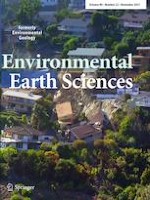01.11.2021 | Original Article
Comparison of wave-cluster and DBSCAN algorithms for landslide susceptibility assessment
Erschienen in: Environmental Earth Sciences | Ausgabe 22/2021
EinloggenAktivieren Sie unsere intelligente Suche, um passende Fachinhalte oder Patente zu finden.
Wählen Sie Textabschnitte aus um mit Künstlicher Intelligenz passenden Patente zu finden. powered by
Markieren Sie Textabschnitte, um KI-gestützt weitere passende Inhalte zu finden. powered by
